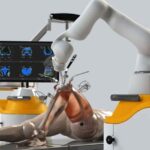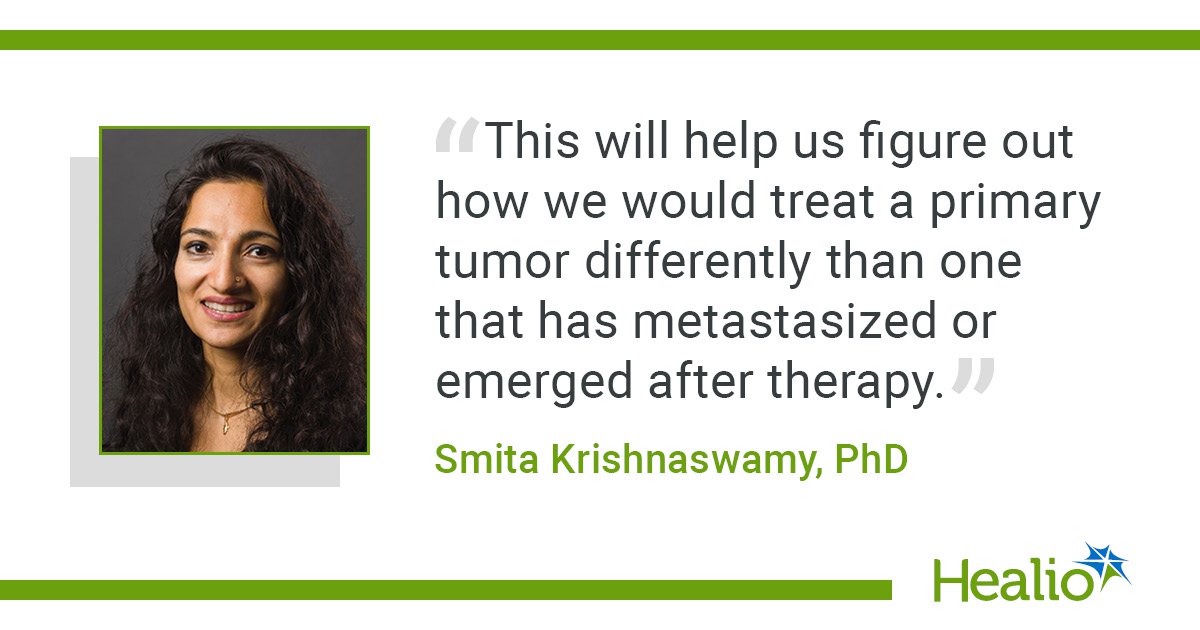August 06, 2025
3 min read
Key takeaways:
- AAnet characterized five different cell archetypes in triple-negative breast cancer, including those that have links to metastases.
- Other cancers could have different cell types.
A novel AI tool could help clinicians personalize cancer treatments through characterization of individual tumor cells.
Archetypal Analysis network (AAnet) classified five unique cell types within triple-negative breast cancer samples, including those that had associations with proliferation and metastases.

“You have to view the cancer as a family of cells that are playing different roles to make the tumor proceed or progress,” Smita Krishnaswamy, PhD, associate professor of genetics and computer science at Yale School of Medicine, told Healio.
Cancer cells are heterogeneous
Krishnaswamy and Christine L. Chaffer, PhD, associate professor and program director of cancer plasticity and dormancy at Garvan Institute of Medical Research in Australia, have focused their research on understanding the “dynamics of cancer cells,” Krishnaswamy said.
They have investigated how cells evolve from their initial state to become metastatic.
“What we were seeing was there was a lot of heterogeneity, and different cells undergo different transformations,” Krishnaswamy said.
“Heterogeneity is a problem because currently we treat tumors as if they are made up of the same cell,” Chaffer said in a press release. “This means we give one therapy that kills most cells in the tumor by targeting a particular mechanism. But not all cancer cells may share that mechanism. As a result, while the patient may have an initial response, the remaining cells can grow and the cancer may come back.”
Krishnaswamy, Chaffer and colleagues set out to develop an AI tool to try and characterize cellular heterogeneity, which can be difficult because visualizations of cellular transcriptomic states often look like a “blob without distinct clusters,” Krishnaswamy explained.
“What we’re doing is we’re analyzing the corners of “the blob,” after a shape transformation to find extremal cell states,” she said. “We put them through a neural network that simplifies the cellular population into a certain kind of shape, and we can analyze the corner. These are the extreme phenotypes, whereas the other cells in the tumor are mixtures of these. That’s how that model works.”
They evaluated AAnet on models of triple-negative breast cancer and human samples of ER positive, HER2 positive and triple-negative breast cancers.
‘Hone your treatment’
AAnet found five cell archetypes: proliferative, oxidative/adipogenic, hypoxic, cell damage/death and immune-stimulatory.
Krishnaswamy highlighted the proliferative and hypoxic groups as archetypes to target to reduce metastases.
“[In the hypoxic group], if you target it using GLUT3, it actually decreases the amount of metastases that are formed,” she said. “In a way, that archetype is driving metastases.”
Each person may have a different hypoxic signature, which could influence treatment decisions.
Targeting other cellular groups could produce results, as well.
“There’s an immunostimulatory phenotype. You might be able to target that with immune modulators,” Krishnaswamy said. “You could hone your treatment for these specific cell types rather than treating the cancer as a whole.”
‘This will help us’
Krishnaswamy and colleagues have started a collaboration with Washington University in St. Louis to investigate cells between the primary and metastatic stage to evaluate the transition.
“Another thing that we’re studying right now is how chemotherapy affects these cells,” she said. “While chemotherapy can kill some cells, it actually gives other cells the ability to resist the cancer further. What happens under many rounds of chemotherapy? And what’s the heterogeneity that comes out of chemotherapy?”
Cell heterogeneity also could be researched in other cancer types.
“There would probably be somewhat similar archetypes, but also maybe some specificity based on tissues of origin and tissues of metastasis,” Krishnaswamy said. “We measured the lung, lymph node and liver, and there is some slight difference in the archetypes that you get between these. I don’t think other cancer types would be identical based on the microenvironments these tumors develop in.”
Improvements in single-cell technologies could allow these evaluations to be part of cancer care in the future.
“What the tumor consists of is not very random,” Krishnaswamy said. “It consists of very specific things, just like our faces consist of very specific things — eyes, nose and mouth. Each part has a role. What’s the proportion of each type or where is the cellular density concentrated? What’s driving these cell types and what roles do they have in the cancer?
“This will help us figure out how we would treat a primary tumor differently than one that has metastasized or emerged after therapy,” she added. “It is thinking of it in more detail than what we have been in the past. That might eliminate the cancer faster and not allow it to metastasize. Then, if the metastasis did happen, you would remeasure the heterogeneity in that and see what cells are resistive.”
References:
For more information:
Smita Krishnaswamy, PhD, can be reached at smita.krishnaswamy@yale.edu.










